
Released in 1988, the Yamaha Virago 535 (XV535) would remain in production for nearly two decades. It was actually the most successful of the Virago V-twins, and remains one of the smallest shaft-drive V-twin machines ever produced.
“Surprisingly able handling and an absolute gem of an engine – and all for an affordable price – the 535 became the ‘go to’ first big bike for a generation of riders who wanted the easy manners of a cruiser. Better still, with rock solid reliability, timeless styling and few credible rivals, the little Yamaha remained the best of this type of bike for the best part of 20 years before it finally went off sale in 2004.” –MCN

“I took a break from bikes when I got married; she is wearing a couple of my bikes on her finger now, with no regrets. I knew that with time, a custom build would be in my future.”
With full support from his wife and daughter, Rusten set out to build “an old school café racer with a modern sport bike twist.” Though this would be his first build, he went full-bore. Nearly every part of the bike was modified or built from scratch…and that includes the frame itself.
“The stock Virago frame didn’t fit the vision I had in mind, so I set it in a jig, cut the neck off (to retain the VIN) and built a new backbone, seat hoop, and down tubes out of chromoly and TIG welded it together.”
That’s some serious fabrication for a first build — bravo, Rusten! Other highlights include a swingarm modified to run a Yamaha R1 mono shock, one-off rearsets, handmade fiberglass tail section, modified Suzuki GT550 tank, hand-built stainless exhaust system, and much more. The bike now weighs just 380 pounds wet — a full 66 pounds lighter than the stocker — and Rusten says this little V-twin handles great.
“To ride this bike is incredible because I know that no one else is out on a bike just like this and my vision on my napkin drawings is out on the road and I can ride it. Every time I’m on it, it puts a smile on my face.”
That’s the beauty of a custom bike, Rusten — it’s a one-of-one, completely unique, and there’s no better feeling than riding on a bike you built yourself. And you know a build has character when it seems to name itself.
“During the tuning process of this build I unfortunately had a nuisance complaint from a neighbor. As you can imagine, the word nuisance was stuck in my head from that point on. The first word out of a friend’s mouth, who may be as much or more of a bike enthusiast than me, said, ‘that’s a classy, classy bike.’ So naturally the bike took on the nickname ‘Classy Nuisance.'”
Perfect! Congrats on this build, Rusten — we love this lightweight V-twin café racer, and we hope to see more of your custom work in the future.
Below you’ll find our full in-depth interview with Rusten, including a comprehensive build sheet, more photos, and more backstory on this “Classy Nuisance.”
Yamaha XV535 Custom: Builder Interview
• Tell us a bit about yourself, your history with motorcycles, and your workshop.
My name is Rusten Smith. I am a family man above all else. I have been married to my amazing wife, Jamie, for 18 years and we have a wonderful daughter, Taylor. They both have been incredibly supportive throughout this entire build, as well as shared in the excitement with me during each new stage. I believe that the most important job in life is to be the best husband and father I can be.
I am a motorcycle and car enthusiast. I always have been. I have loved bikes and cars since I was young. I first got a motorcycle for my 6th birthday, and I have enjoyed being on two wheels ever since. It was a Honda XR80, and since then I have enjoyed many different bikes. I took a break from bikes when I got married; she is wearing a couple of my bikes on her finger now, with no regrets. I knew that with time, a custom build would be in my future.
My workshop is currently in my garage. It is nothing fancy, but keeps me home with my family and still gives me the opportunity to do what I love. It is my fab shop, detail area, and my space to disassemble and assemble my toys. I actually built a side draft booth using PVC pipe, 3M masking film, a fan, and a HVAC filter to paint parts of this custom build. Although my first love is family, motorcycles is a passion that started young.
• What is the year, make, and model of the donor bike?
The original bike that was donated to me in boxes and pieces is a 1995 Yamaha Virago 535.
• Why was the bike built?
I have always wanted to build a custom bike, but never had the opportunity. As a kid I would draw custom bikes for hours and always thought how cool it would be to actually build one of those sketches that I created. I used this opportunity as a personal challenge, to create the vision in my mind and bring it to life.
This is my first custom build, and I pulled out all the stops and took it as far as I could. I wanted to go all in with this build, not knowing if I would have another opportunity. I had a vision that I knew with hard work I could bring to life. I stopped at nothing, no exceptions, no excuses, and no corners cut.
• What is the design concept?
My design concept was to create something unique. Something light, aggressive, sporty and minimalistic. I wanted to create something that when people saw it, they stopped to look. Beyond these concept ideas, and even more importantly, I needed it to have soul, character, and attitude. I wanted to create a design concept that speaks to you when it is simply sitting still. The influence of this build was old school café racer with a modern sport bike twist.
I love that old school café racers are stripped down to bare bones for speed and a modern sports bike for modern track-born components and tech. I was inspired to create something that could embrace my love for both styles in one build.
• What custom work has been done to the bike?
This is my first custom build, but I did not let that hold me back in any area. The process was full of problem-solving and learning as I went. I wanted to try everything, testing my personal limits to the fullest. Everything on the bike has been modified or completely made from scratch with the only exception being the two wheels it stands on. My goal was to refurbish or modify as many parts as possible, and to fabricate the rest from scratch.
The real challenge was the frame. The stock Virago frame didn’t fit the vision I had in mind, so I set it in a jig, cut the neck off (to retain the VIN) and built a new backbone, seat hoop, and down tubes out of chromoly and TIG welded it together.
The swingarm is heavily modified. I removed the dual shock mounts and fabricated a new hoop with tabs to accept the R1 mono shock. I made multiple rear set brackets in different dimensions to test for comfort and functionality.
The triple tree has been modified and a speedo bracket was fabricated to get the smaller Daytona gauge lower and at the correct angle. The shifter, linkage, and shifter arm were made to the proper new length. The rear drum linkage was made using a 1932 Ford Clevis, and the break arm was fabricated from a top fuel dragster steering arm.
The stock kickstand was modified to its new angle by creating a new pivot point and bushing.
As far as the tins are considered, the tank is from a 1974 Suzuki GT550 and modified to work with the new frame that I created.
The front fender is stock Virago cut down and reshaped to match my visions. The center section was raised to continue the GT550 tank’s body line.
I took measurements of the tank and shrunk them down to get the correct proportions of the cowl. The cowl and seat base are hand-laid fiberglass using floral foam sculpted to shape as a mold.
I incorporated the raised center section from the tank again that tapers off down the back of the cowl to have a nice continuous line from front to rear. I also made the seat pan from fiberglass. I then glued multiple layers of foam and shaped it with a variety of knives, files, and different grits of sandpaper.
The exhaust was fabricated from stainless exhaust tubing and was quite a task due to the lack of space in between the rear cylinder and frame.
Then it was finished with a multistep sanding and polishing process to bring it to a mirror finish. A new manifold was also fabricated from aluminum for a single carb conversion.
The frame and frame components were prepped for powder by media blasting. The tank and fender were chemically dipped to remove paint and any rust that may have been hidden. I powder-coated the frame, frame components, and wheels with a semi-gloss black. The engine was broken down, gone through, and painted satin black.
The tank, fender, and rear cowl were all painted Lotus Dark Verdant Green, and a custom gold pearl was mixed for the stripe to tie in with the powder coated rear spring and master cylinder.
• Does the bike have a nickname?
It actually does have a nickname. The bike kind of named itself. During the tuning process of this build I unfortunately had a nuisance complaint from a neighbor. As you can imagine, the word nuisance was stuck in my head from that point on.
The first word out of a friend’s mouth, who may be as much or more of a bike enthusiast than me, said, “that’s a classy, classy bike.” So naturally the bike took on the nickname “classy nuisance.”
• Any idea of horsepower, weight, and or performance numbers?
I have put the bike on the scale and the bike’s wet weight tips the scale at 364 lbs. The original stock wet weight was 430 lbs, so seeing as one of my goals was to strip it down and have a light bike, I take that as a win.
I don’t have horsepower numbers other than that Yamaha claimed 44hp. I am sure the single carb set up has affected that a bit, but I know it rides well. I do not have official performance numbers, but the smile factor alone is good enough for me.
• Can you tell us what it’s like to ride this bike?
It really triggers all of your senses. It feels light, handles great, and sounds amazing. It makes me proud because it gets a lot of attention. Whether it is on the road getting a thumbs up or parked where people can come up and get a closer look. Every time it’s out I get a lot of questions. The questions I get most often are what is it, where can I get one, and who makes it?
The comments and feedback from random people are uplifting. Many of these people are bike enthusiasts, many know nothing about bikes but are intrigued by its unique look, and some build bikes themselves and are floored with what I created. That feels great. To ride this bike is incredible because I know that no one else is out on a bike just like this and my vision on my napkin drawings is out on the road and I can ride it. Every time I’m on it, it puts a smile on my face.
• Was anything done during that build that you were particularly proud of?
There are many things that I am particularly proud of, but I will name a few specific things. I am very pleased with the placement of the wires and how clean the wiring harness turned out. This was a huge vision and goal of mine, and I knew it would not be easy. It came with many headaches, but I am thrilled with how it turned out and the end result.
I am also very proud of the color choices of this bike. The green is unique and shifts between a dark, almost black, to an emerald green depending on how the light hits it. It has a ton of flakes in it as well, which adds to the eye-catching colors. The color is very hard to pick up on camera, but in person is incredible. The gold pearl is also hard to see in photos, but shifts from gold to an almost reflective white. Overall, I am very proud of this entire project.
• Build List:
– Frame- tig welded chromoly
– Swing arm- modified
– Rear mono shock- R1
– Rear sets- custom fabricated
– Clip ons- woodcraft
– Clutch leaver- R1
– Throttle tube- motion pro cr pro se
– Front brake master cylinder- Nissin
– Brake pads front and back- EBC
– Brake line- Core Moto breaded stainless steel
– Rear brake linkage- custom using 1932 Ford clevis
– Rear brake arm- top fuel dragster steering arm modified
– Shifter linkage- custom fabricated
– Front fender- stock virago modified
– Gas tank- 1974 Suzuki GT550 modified
– Rear cowl- one off fiberglass
– Tail tidy- custom fabricated
– Exhaust- custom made stainless
– Carburetor manifold- custom made aluminum
– Electrics- Motogadget m-unit, mo-lock, Rick’s regulator/rectifier, stater, and starter motor
– Push button switches- PBM
– Headlight- PBM
– Turn signals/brake- PBM
– Speedo- Daytona velona 60
• Is there anyone you’d like to thank?
First and foremost, I want to thank my beautiful wife, Jamie, for allowing me to pour so much time into bringing my vision and passion to life. For believing in me that I could take my drawings and make them a passion project to be proud of. She has been incredibly supportive and encouraged me throughout the whole process. I couldn’t have done it without her love, confidence, positivity, calmness, and support.
Second, I would like to thank our daughter, Taylor, for her support during this creative journey. She has been my biggest fan and it has been great to share my ideas with her each step of the way. I appreciate that she kept my color choice between us for so long, knowing she was the only one I shared it with, and her eye for detail was valuable.
I’d also like to thank:
• Richie Crampton at Indy Speed Shop for allowing me to work on parts in his shop and use his equipment.
• Tom Gilroy Purpose Built Moto for the kind words through email that gave me the extra push I needed.
• Indy Superbikes‘ whole staff
• Ben Griffin of Pro Strip Indy for allowing me to bring parts to work and work on them before and after hours.
• Andy Neustifter for sharing his knowledge with me and helping me out when I got stumped.



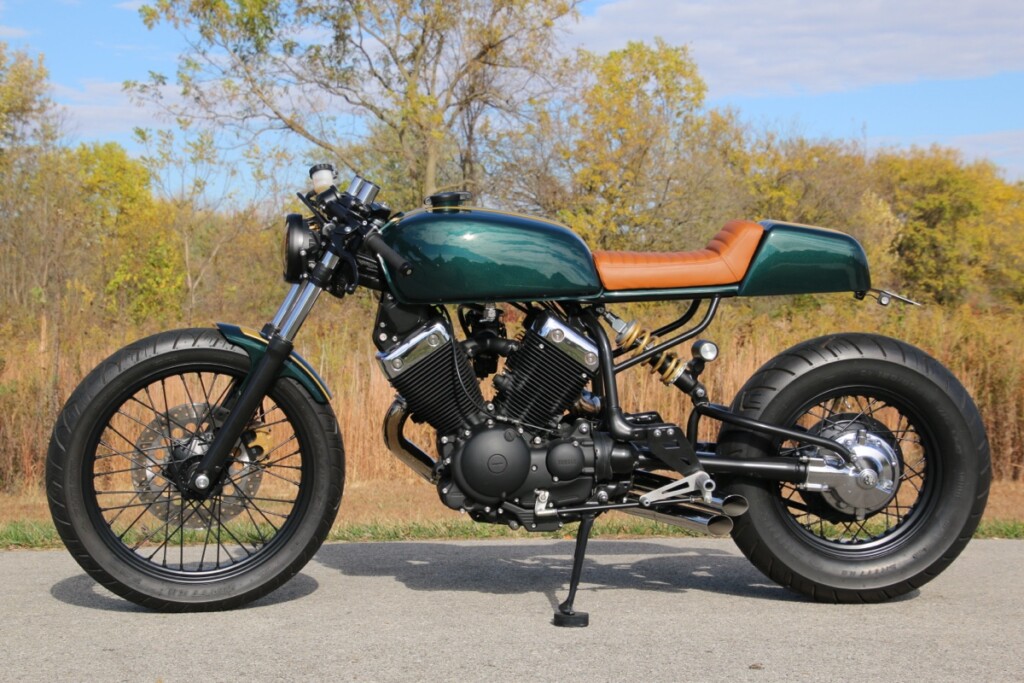

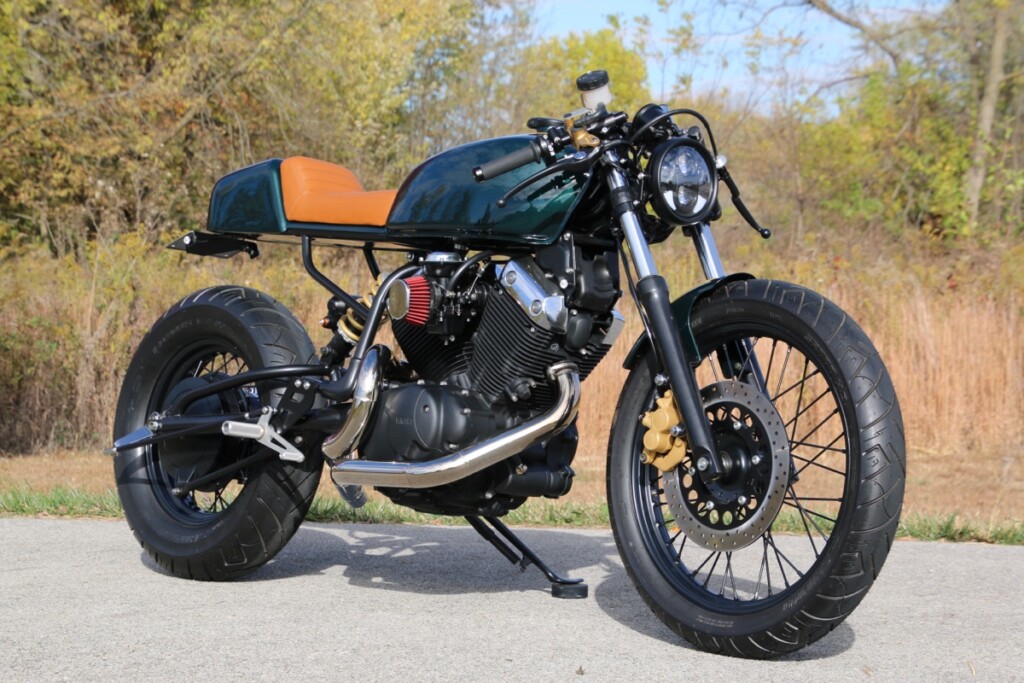
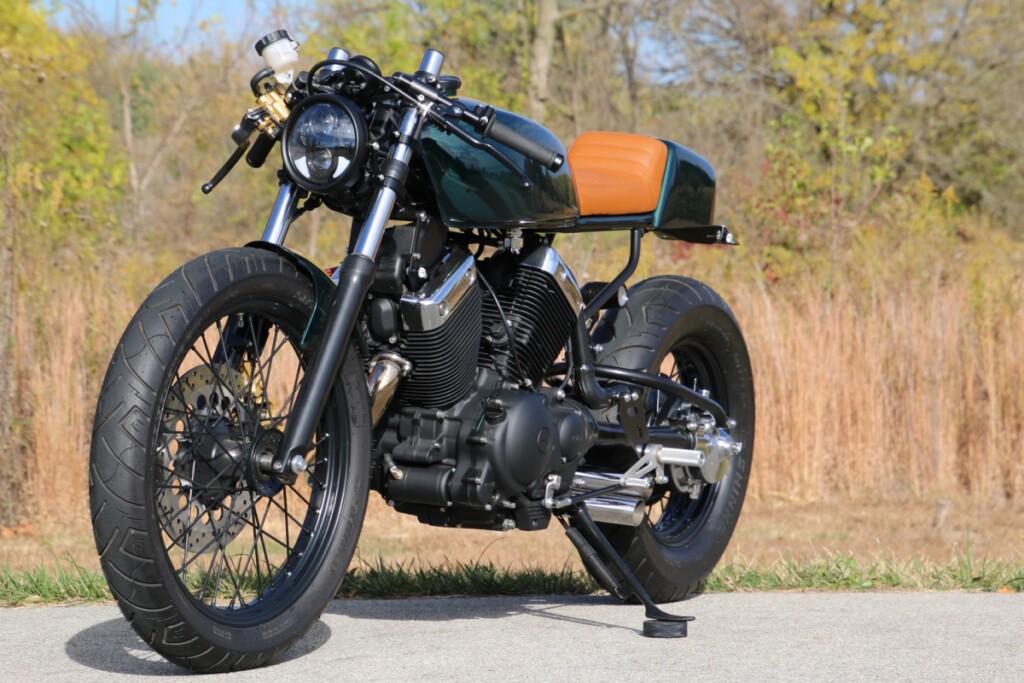



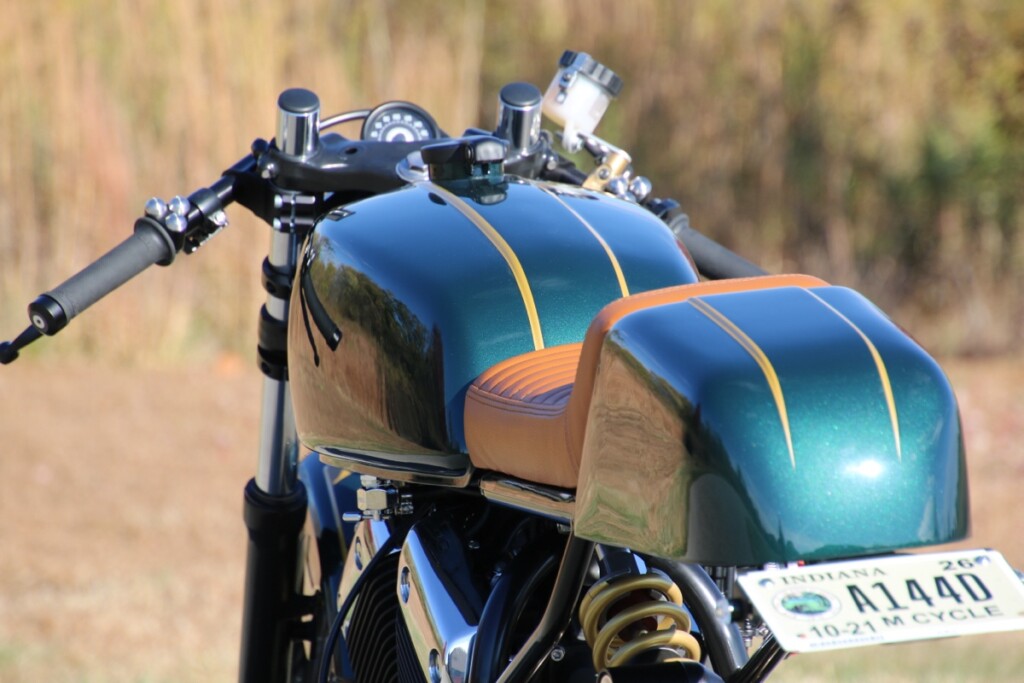
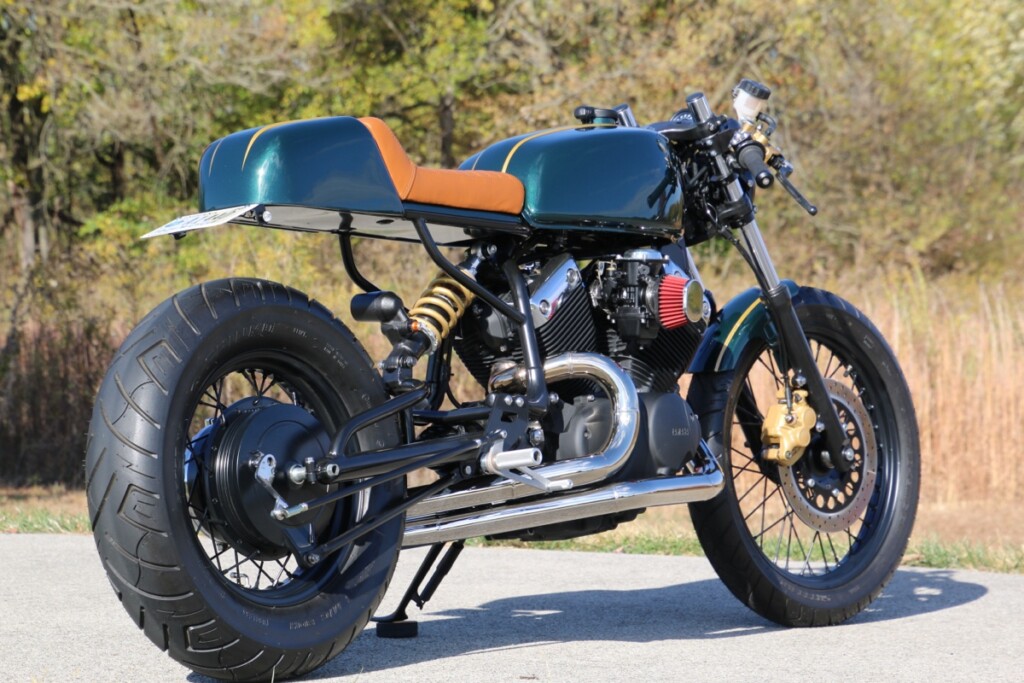

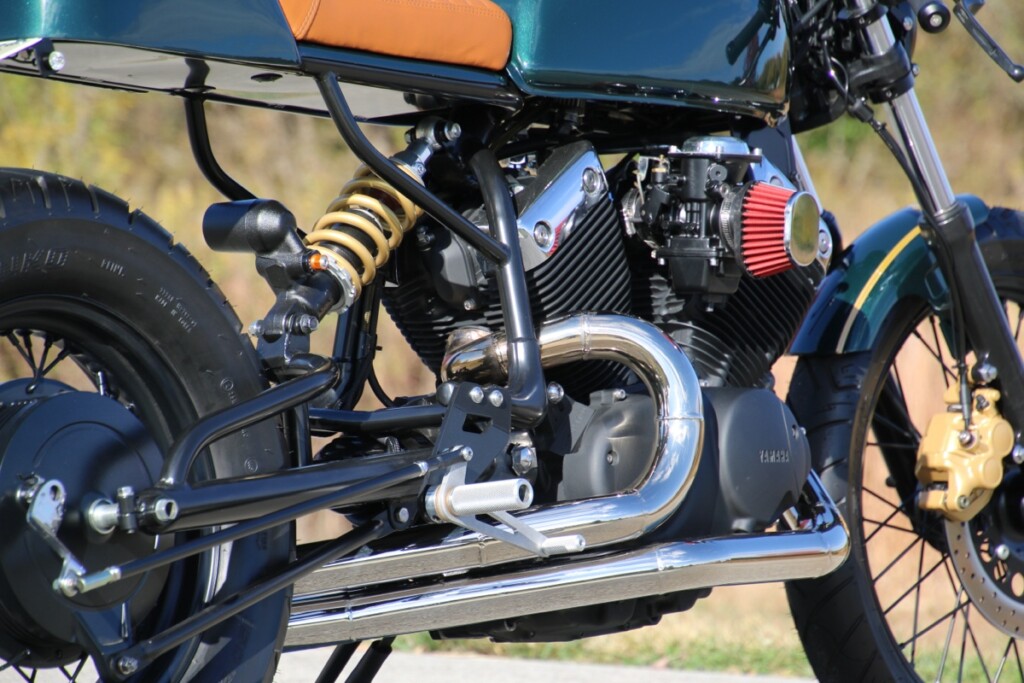
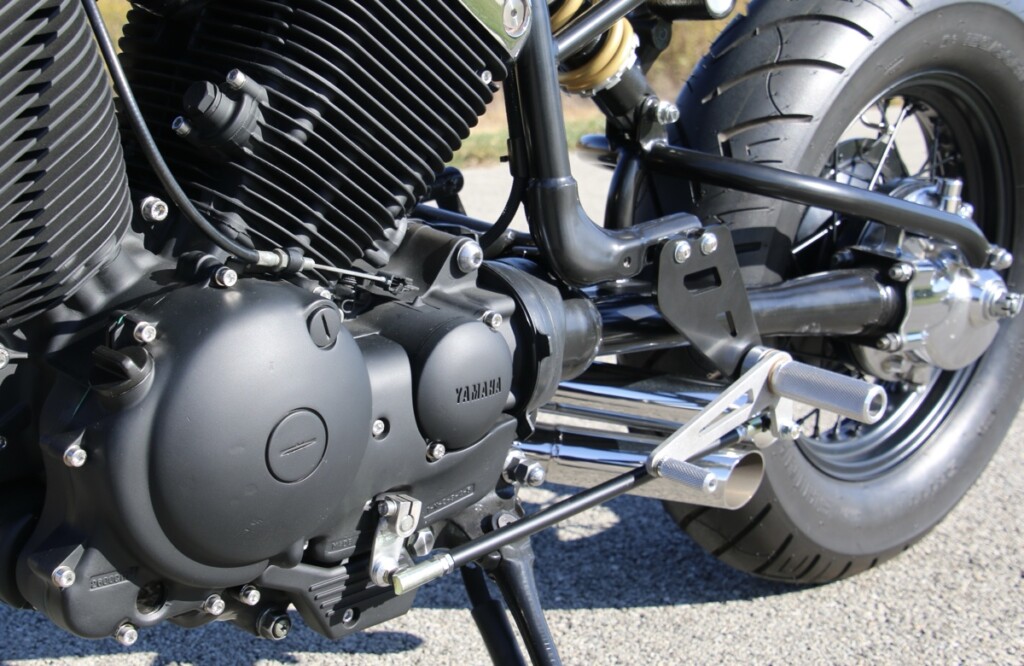

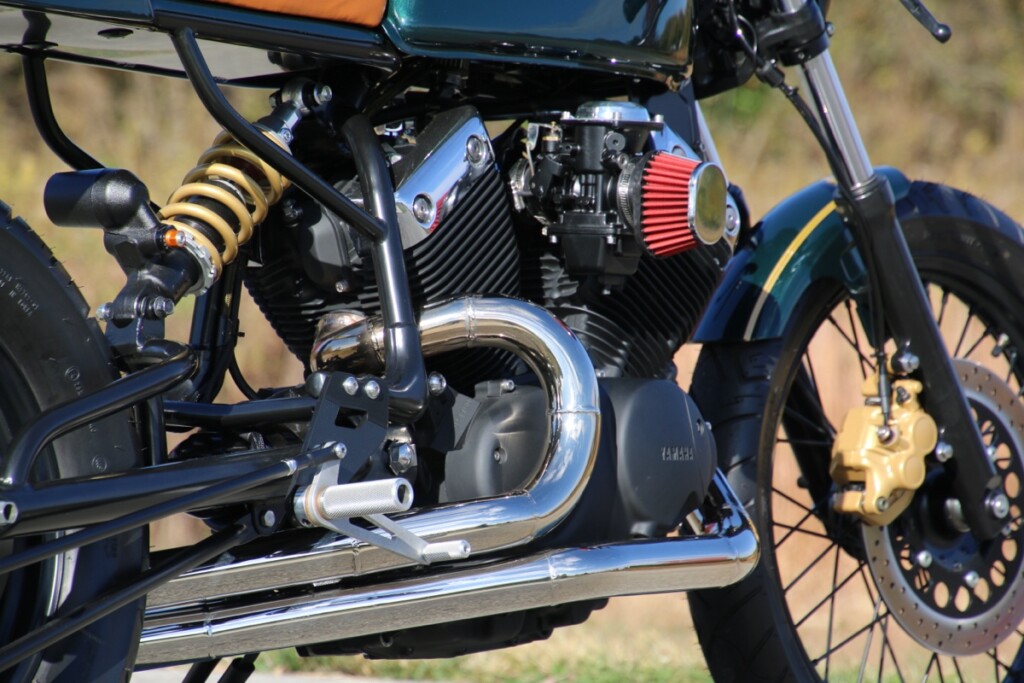


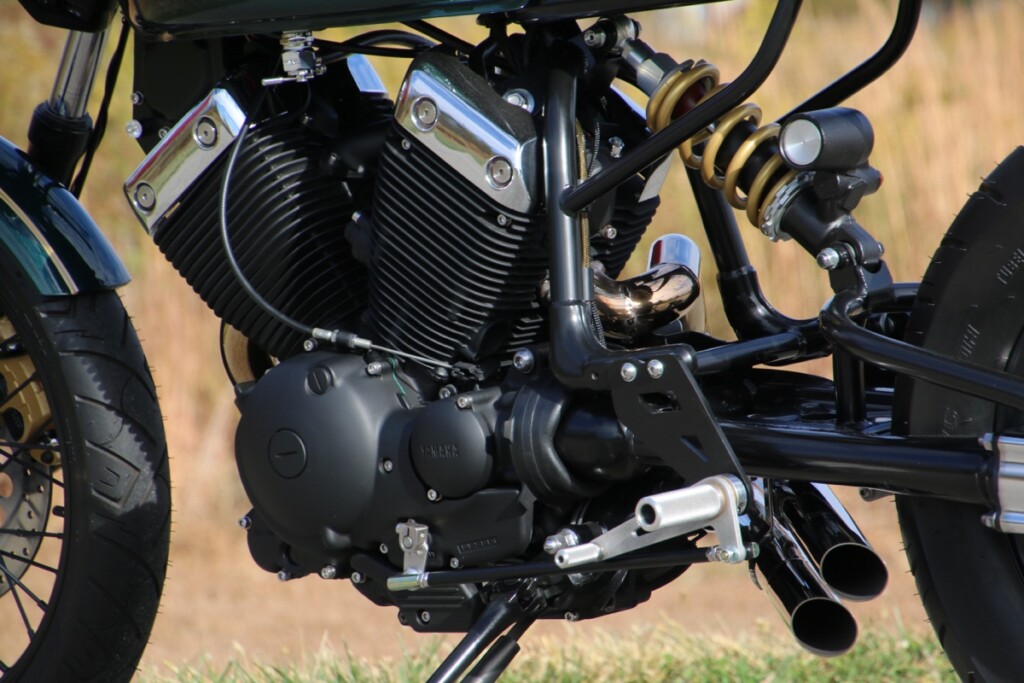
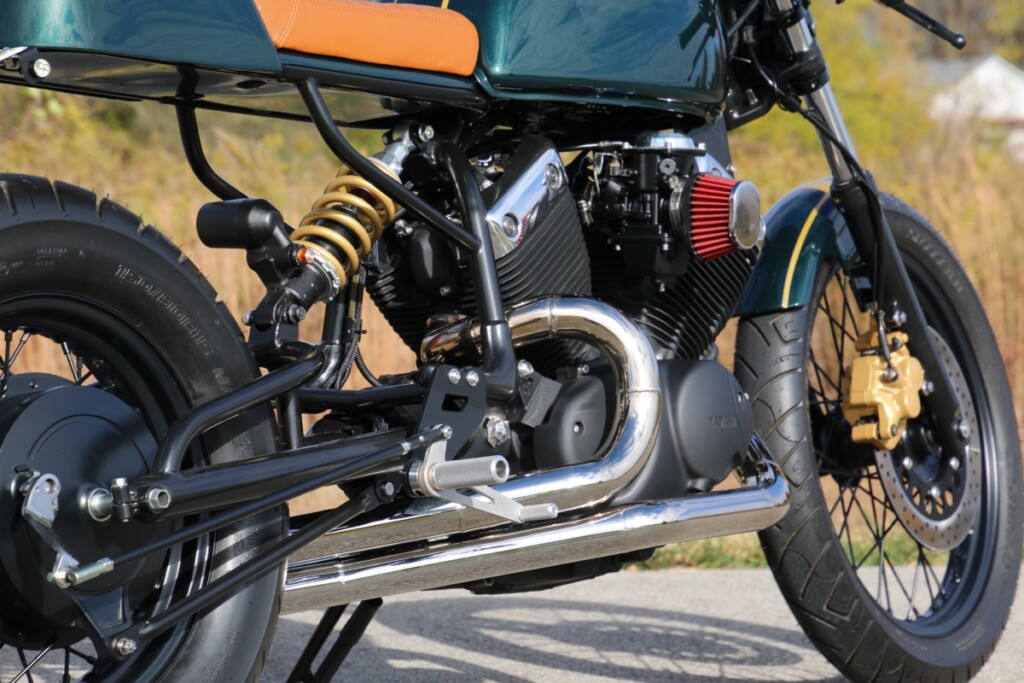

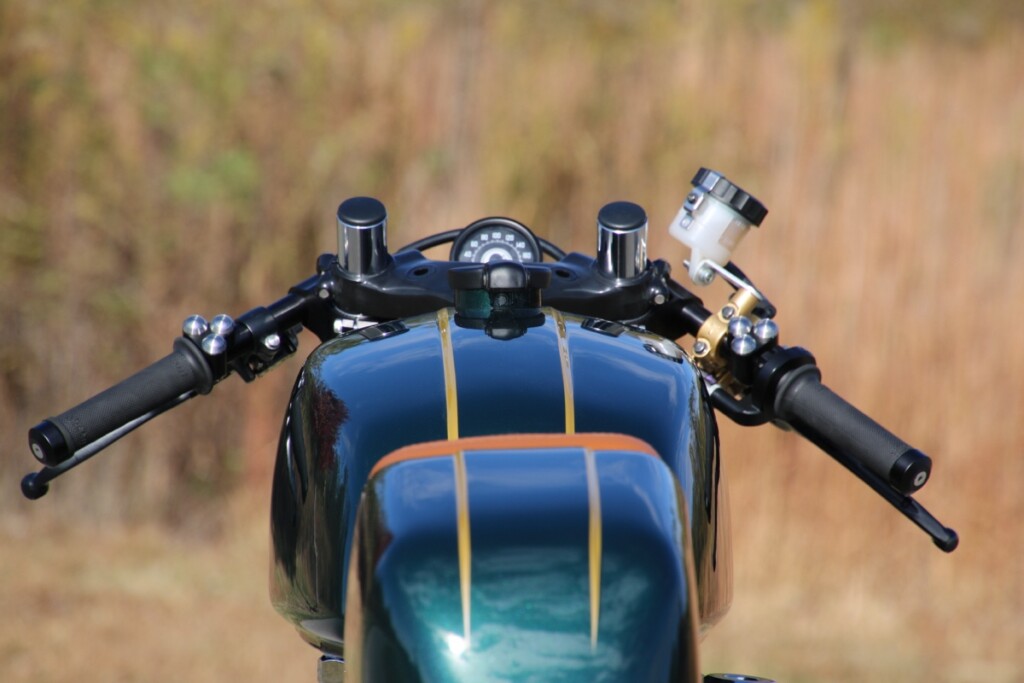
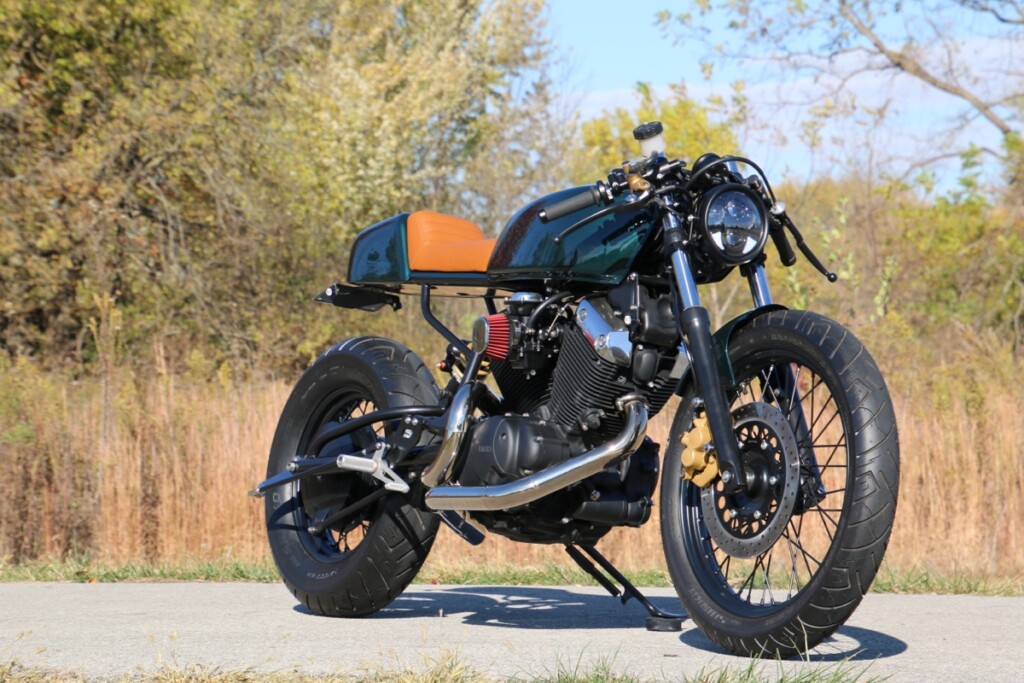



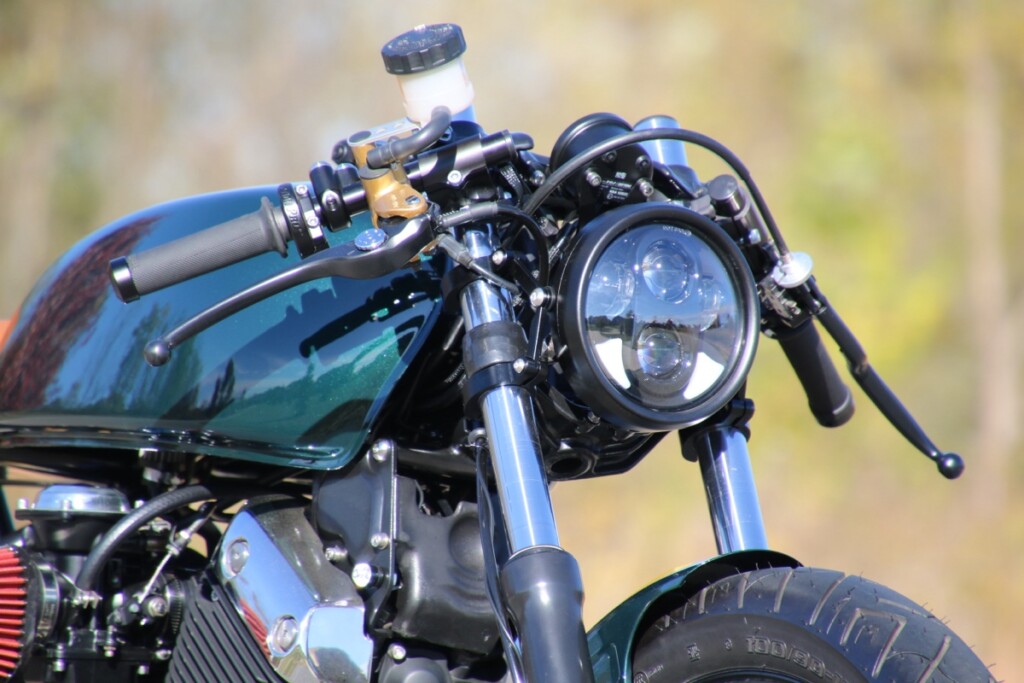
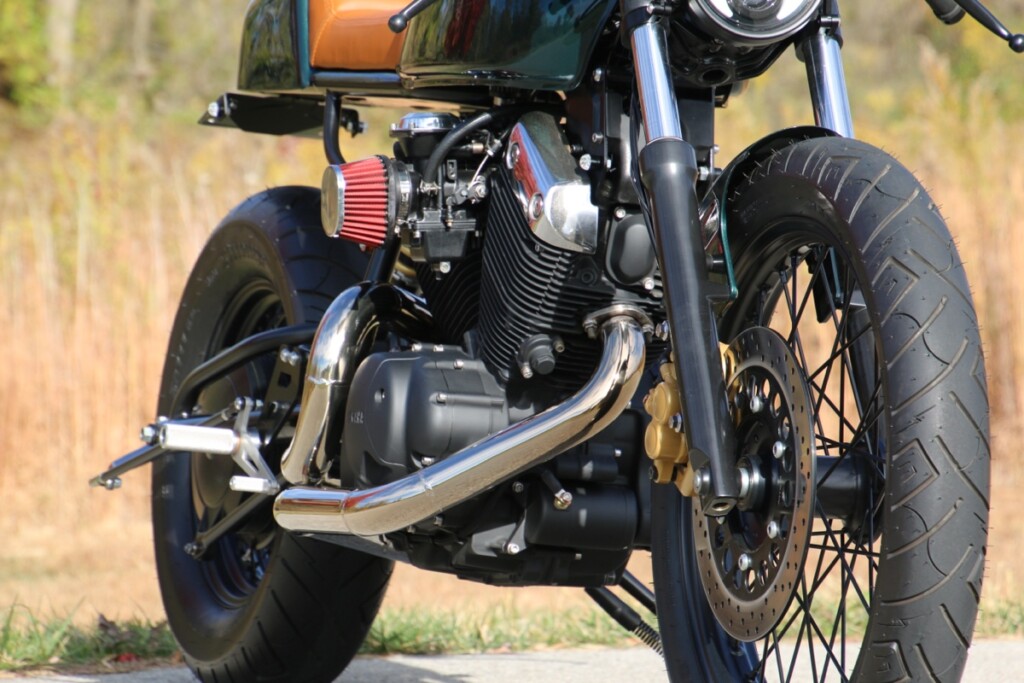

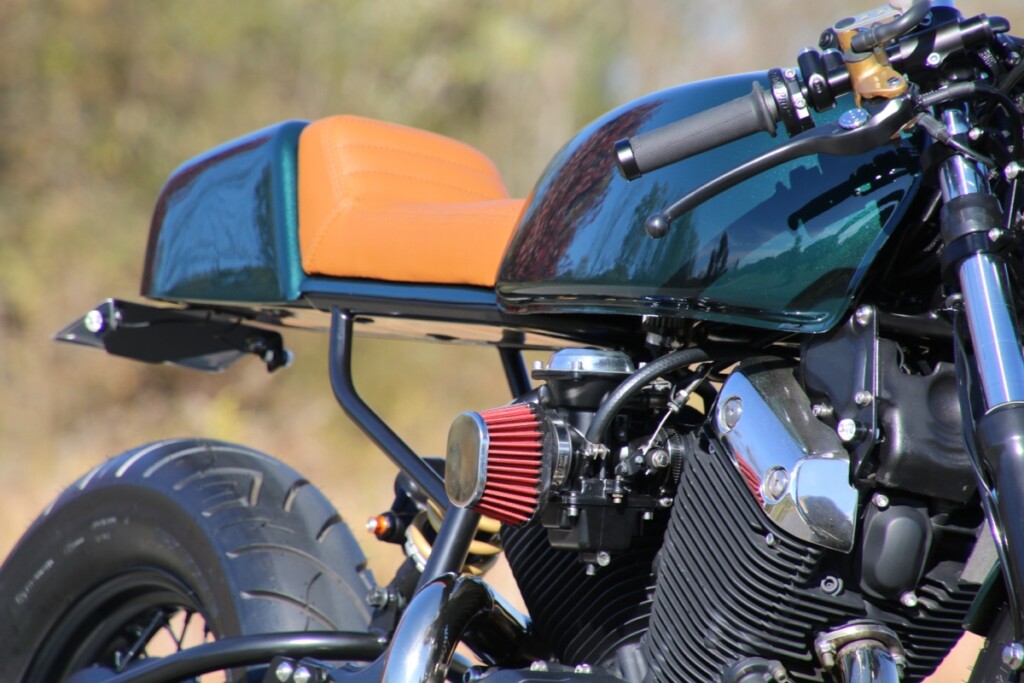
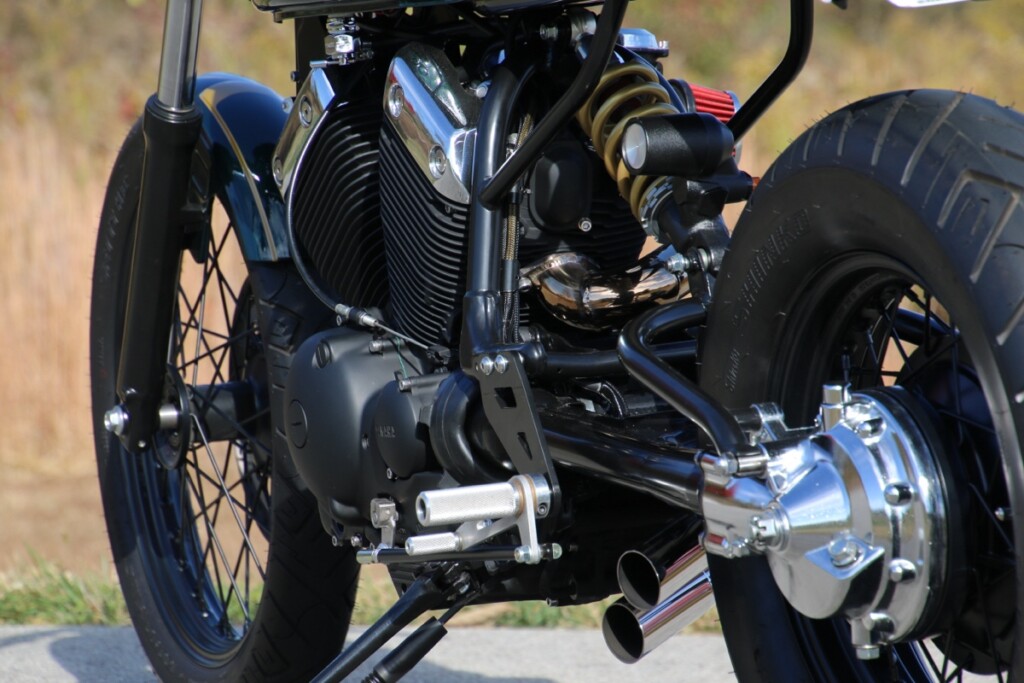
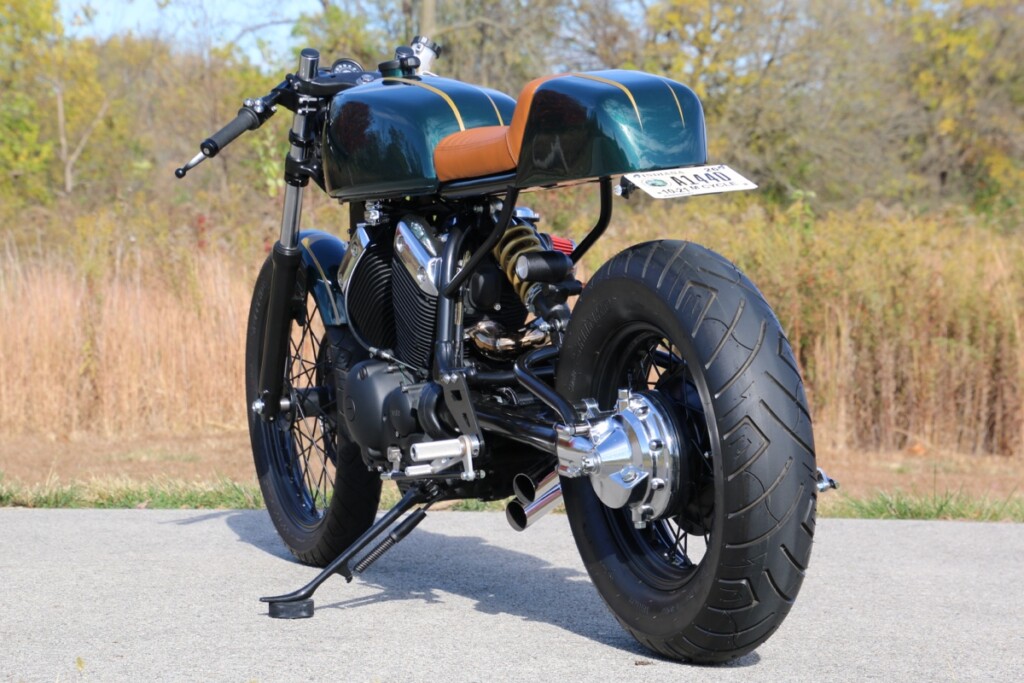





That would be an excellent build from a pro. As a home garage built first effort, it’s an out-of-park home run. Well done, Mr. Smith. Press on.
Bravo! More, please.